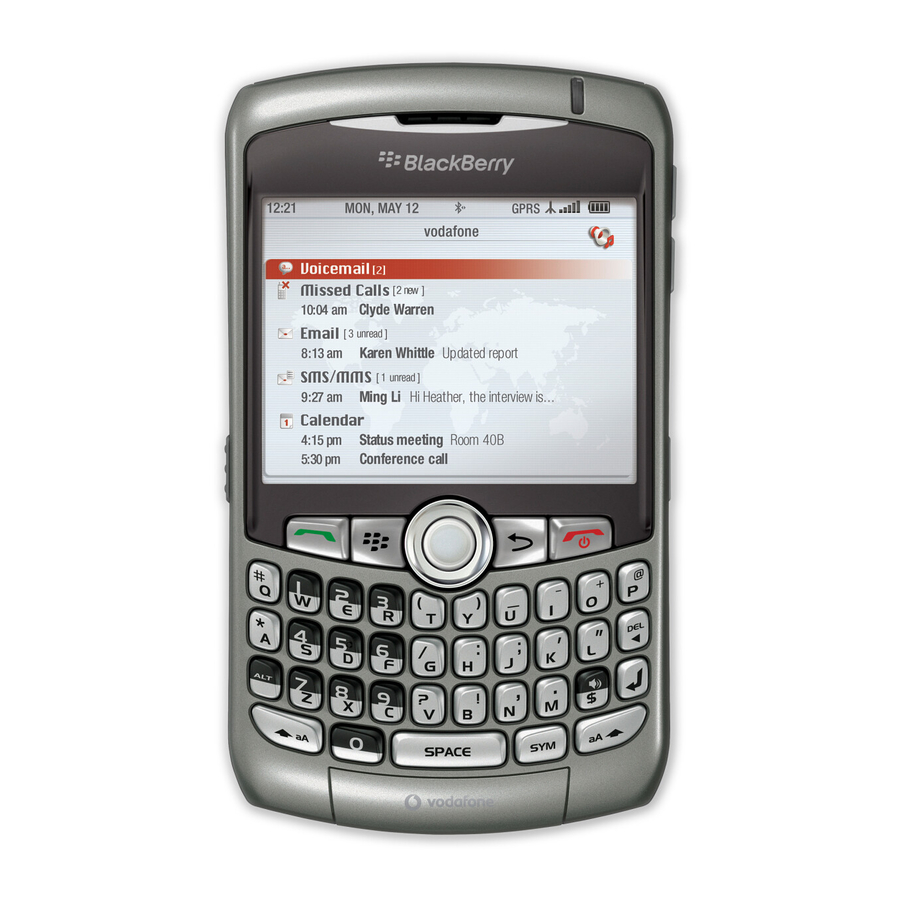Blackberry CURVE 8300 - CURVE 8310 SMARTPHONE Product Information - Page 17
Browse online or download pdf Product Information for Cell Phone Blackberry CURVE 8300 - CURVE 8310 SMARTPHONE. Blackberry CURVE 8300 - CURVE 8310 SMARTPHONE 31 pages. Blackberry curve 8320: quick start
Also for Blackberry CURVE 8300 - CURVE 8310 SMARTPHONE: Getting Started Manual (46 pages), Getting Started Manual (46 pages), Product Information (33 pages), Product Information (30 pages)

• MIC, 2001, Article 14-2 of the Ordinance for Regulating Radio Equipment
To maintain compliance with FCC, IC, MIC, and EU RF exposure guidelines when you carry the
BlackBerry device on your body, use only accessories that are supplied or approved by Research
In Motion (RIM). Use of accessories that are not expressly approved by RIM might violate FCC,
IC, and EU RF exposure guidelines and might void any warranty applicable to the BlackBerry
device. If you do not use a body-worn accessory supplied or approved by RIM when you carry
the BlackBerry device, keep the device at least 0.98 inches (25 mm) from your body when the
BlackBerry device is turned on and connected to a wireless network. When using any data feature
of the BlackBerry device, with or without a USB cable, keep the device at least 0.98 inches (25
mm) from your body. If you use a body-worn accessory not supplied by RIM when you carry the
BlackBerry device, verify that the accessory does not contain metal and keep the BlackBerry
device at least 0.98 inches (25 mm) from your body when the BlackBerry device is turned on
and connected to a wireless network.
Specific absorption rate data
THIS WIRELESS DEVICE MODEL MEETS GOVERNMENT REQUIREMENTS FOR EXPOSURE TO
RADIO WAVES.
The BlackBerry® device is a radio transmitter and receiver. It is designed and manufactured not
to exceed the emission limits for exposure to radio frequency (RF) energy set by the Federal
Communications Commission (FCC) of the U.S. Government, Industry Canada of the Canadian
Government (IC), and recommended by The Council of the European Union. These limits are
part of comprehensive guidelines and establish permitted levels of RF energy for the general
population. The guidelines are based on standards that were developed by independent
15
